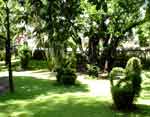Click on thumbnails for bigger/better pix
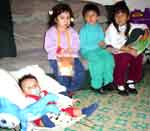

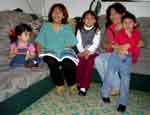
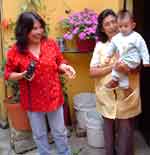
Angeles, Conchita, Pescadito
Click on thumbnails for bigger/better pix
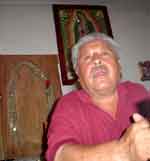
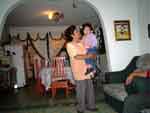
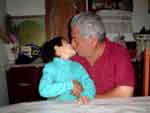
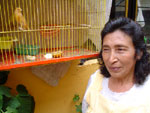
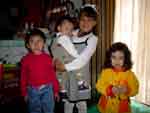
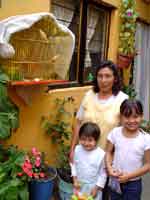
Elissa and her family live with Jose's parents in Nezahualcoyotl. It's a very interesting environment and I wanted to give you a small glimpse of it.
Neza itself is quite interesting. It is build on the ancient shallow lake, Texcoco. In Aztec times there must have been boat traffic, distant pyramids, shallows with reeds and frogs and probably a ton of interesting food stuffs, and probably floating farms patches (I think they were called chinampas but I can't really remember and I'm probably spelling it wrong).
One morning I went with Javier to walk the dogs, and we went out on the tierras comunales, the common lands, out behind the vast dump where we walked last time, which is like a city in itself. First we walked down a long park-like strip in the middle of a wide busy street, then we crossed a busy highway with virtually no pedestrian control, just cross as cross can, and then we were in a vast field, with maybe a hundred or more simple soccer fields, side by side and end to end. Nothing fancy. No nets. No grass. No chalk grids. No bleachers. Metal goal posts. Clear flat dirt.
Javier said that Saturday and Sunday they are full of players. Saturday kids, Sunday adults. League play. I tried to picture the field full of soccer players. On this particular morning, a few workers were repairing the drainage off on one side, trying to ensure that field would be playable by the weekend.
We sat awhile until the mosquitoes found us. I wanted to ask Javier more, but he doesn't speak English and my Spanish really sucks, so it just seemed easier to sit and think. I looked west, across the carcel, past the airport. I wonder, let's say it's the year 1415, we're right on this spot in a boat, maybe six feet higher than now. Can we see the Templo Mayor in Tenochtitlan? I try to imagine the scene.
Anthropologist Oscar Lewis describes "Neza" in his classic study, "Five Families." Writing in the early 50s, Lewis described the lives of five Mexican families. One lived in Neza. At the time it was a collection of squatters on the margin of the capital, populated by the poorest, latest migrants to the city. Today it is a city of 1.2 million, but really it is a part of the Greater Mexico City contiguous urban area.
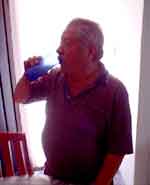
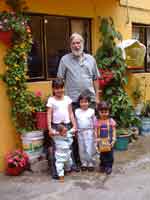
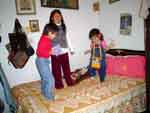
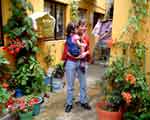
It is really lively. Elissa likes it here, and when she describes what she likes about it, it reminds me of how I imagine the "old neighborhood" in Brooklyn to have been when my parents were youngsters. You just walk out your door and find groceries, produce, dry goods. Almost anything. Maybe not what I go to Fry's or CompUSA for, but what you need for day-to-day. And your neighbors and extended family members are out there, too. It's a neighborhood that has a lot more cohesion than what most of us live in.
Click on thumbnails for bigger/better pix
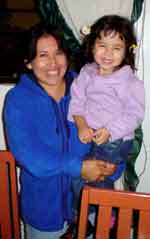
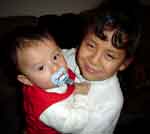
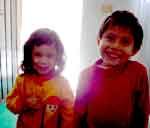
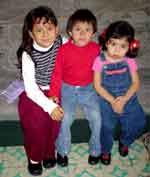
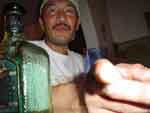
The extended family is really something. I have two grandchildren. They each live a couple of thousand miles away from me, more or less, in opposite directions. Of course it's always a treat to see them, but hard to build a relationship.
Chon and Conchita, by contrast, have five grandchildren, and they all live within a few blocks! Four of them were over for meals twice a day! How cool must that be? And Xochi has such a fun group of primos to play with.
Lalis feeds pups on roof

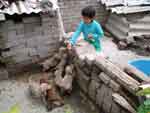
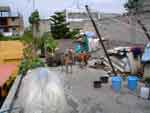




I'll point out a few things here:
Upper left: Casa de Abuelitos from the street.
Under that, horse drawn trash collection.
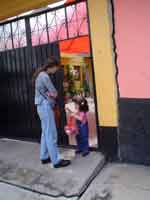


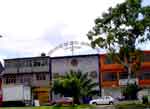
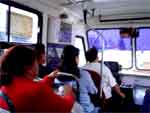

Left: "Iglesia Israeli"
Under that: Small bus ("Micro") that goes to and from the Pantitlan Metro Station. Just above the driver on a left is a little cabinet, with little airline liquor bottles. Why? Emergency? Good luck? The driver thought it was cool?
Right: Another way to get to the Metro station is by combi, which is basically a minivan set up to seat about 12. I guess it's a little faster than the bus. They each cost about 30 cents.
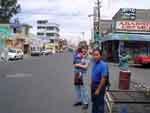


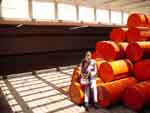
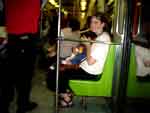
Left: The great Mexico City subway system. I think construction began around 1968. Fantastic system that takes you anywhere for 20 cents. Sometimes it gets a little crowded, but man! One time I suggested, bourgeois that I am, that we grab a cab from the southern bus terminal, because we were carrying a bunch of stuff, but Jose and Elissa agreed that it would just take too long to go by cab instead of taking the Metro.
Many of the stations are really interesting. At left is a station called Instituto del Petroleo, decorated with art and benches made from oil drums.
People get on and off the crowded cars, selling stuff for a buck: tools, magazines, but mostly cd's. They call out their wares, sometimes in a very melodious chant.
Cool t-shirt on the metro: "Los Angeles Si Existe." I was relieved. Los Angeles does exist. But on the back there were angel wings, and I realized it wasn't referring to my home port.
Right: Two visits to Mexico City.
Above, at a booksigning by political cartoonist El Fisgon.
Below, lunch with my friend Laura.

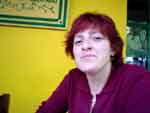

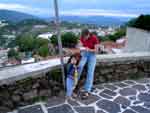
Taxco is a picturesque colonial mining town in northern Guerrero, famous to this day for its silver jewelry. We went there just to kick around and site-see.
The intercity bus system in Mexico is also wonderful, cheap, frequent and comfortable. When we left the bus, we walked uphill toward the city center, and found a very nice hotel, built around a courtyard with a great old tree in the center. We walked around town, ate, sat in the square, visited the beautiful 17th century church.
Vacation for me is a chance to catch up on some reading, and I was enjoying a book my friend Bruce gave me some time ago, THE WANDERING JEWS by Joseph Roth. My last major trip was to Israel, which continues to be a major area of interest for me, and so throughout this trip in a foreign country, reading in my area of current interest, I always had a small feeling of being over in the Mideast, and not Mexico at all. And I'm reading this book on Jews in Europe between the World Wars. And that evening, in the beautiful very Mexican courtyard of the hotel...some guys with yarmulkes! Very disorienting!
Elissa said it was a good thing I wasn't reading about the Bush family!
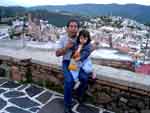
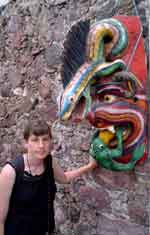
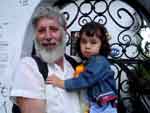
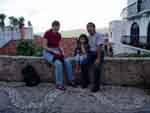
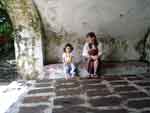
The next morning, Jose had to get back to the city, but Elissa and I decided to visit Cuernavaca before we returned.
Left and right: Borda Gardens.
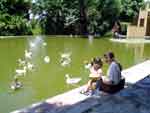
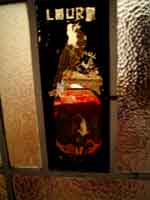
Left: Elissa remembered this hotel we stayed in 1992, Los Canaritos, and she thought it had a pool, so we asked a cab driver and he took us there. Alas, it has seen better days. The pool was closed. The squash court looked like it hadn't been used in years. The beds were a bit, well, creaky. But here's something curious: On the door window of every room was this picture of a canary, with the room number. On only one room that I could see (ours), there was a name scratched into the glass above the picture: Laura (my daughter-in-law's name, as well as my Mexico City friend).
Right: Bamboo topiary at the Borda Gardens.
